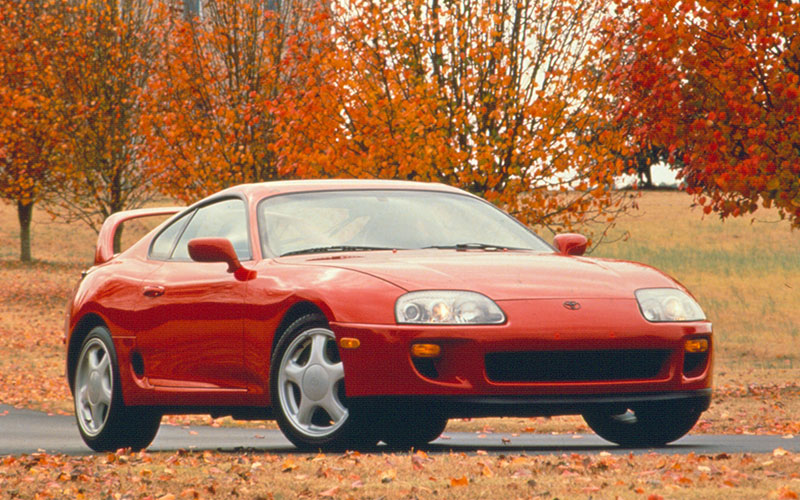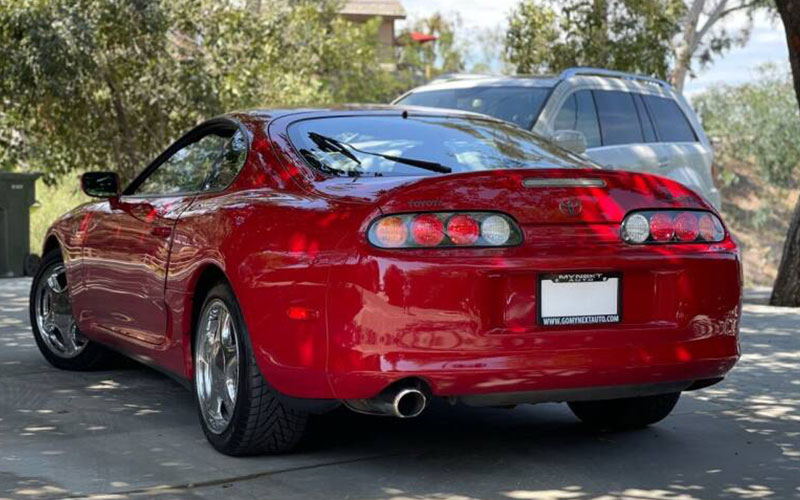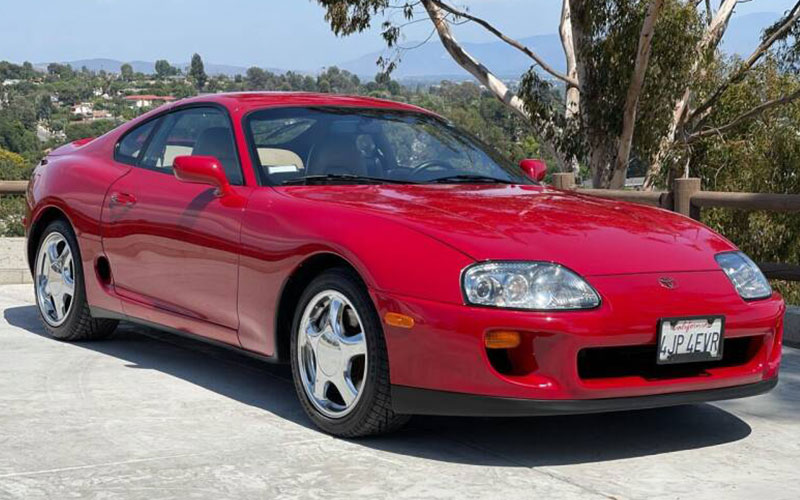Cool Car Find: 1993 Toyota Supra Mk. IV
This fourth-generation Toyota Supra could have you living out your Fast & Furious fantasies.
Emperor of Emperors

The 1990s were heady times for Japanese sports cars, when the country’s manufacturers could seemingly do no wrong. No car better exemplifies the era than the fourth-generation Toyota Supra (A80). Among the likes of the Mitsubishi 3000GT, Nissan 300ZX, and the Mazda RX-7, the Supra has, in retrospect, risen to the status of automotive icon. Despite it’s too short run, the Supra transcends because it epitomizes a time when over-engineering and a motorhead’s love of speed were allowed to co-exist. The results made legends out of the JDM cars of the 90s with the Supra as undisputed emperor.
Graced with its indomitable 2JZ engine and classic 90’s curves, the mark IV Supra has become a fixture in the collective automotive consciousness. The fourth-generation Supra went underappreciated in its day, at least by the car buying public. The final 1998 model year would also see the discontinuation of the Supra mark until its belated return some 21-years hence in 2019.

The Supra didn’t achieve the level of icon, however, until its inclusion in the first The Fast & the Furious movie in 2001. Already prized among the tuner community, the film brought the Supra to a wider audience. Today, the Supra is as revered as ever.
But what makes the Supra so exceptional, even among a generation of truly special cars?
The Right Stuff

Like any good Toyota, the A80 Supra was a marvel of over-engineering and devotion to detail. Based on a shortened version of the Lexus SC’s platform, the Supra featured the classic front-engine, rear-wheel drive sports car layout and came in either coupe or Targa top configurations. The turbocharged version was given the added flourish of a rear wing. The cabin improved on the prior generation, with a more driver-oriented design and impressively comfortable seats. Curvaceous bodylines were the order of the day, but the Supra’s exterior design as aged with exceptional grace, without even a hint of hipster irony to its good looks.

For the fourth generation of the Supra, weight savings was a primary goal for Toyota. Engineers made liberal use of aluminum including in the bumper supports, front cross member, hood, roof (or Targa top if so equipped), some suspension components, and in the oil and transmission pans. They even used hollow fiber carpeting, magnesium for the steering wheel, and plastic for the gas tank in order to trim the mark IV Supra down to 3,210-lbs. (in the base trim).
The Legend of the 2JZ

One thing that wasn’t aluminum was the iron block of the 2JZ. The 3.0L straight-six came in two forms. The naturally-aspirated version made a decent 220 horsepower and 210 lb.-ft. of torque and came with a standard five-speed manual transmission. The twin-turbocharger version significantly upped the output to 320 horsepower and 315 lb.-ft. of torque. Here a six-speed manual came standard. Both versions could be optioned with a four-speed automatic. Significantly, the twin turbochargers happen to be sequential with the first kicking in at 2,500-rpm and the second at 4,500-rpm. The turbocharged Supra turned in a 0-60 time of 4.6 seconds and a quarter mile of 13.1 seconds.

The 2JZ was, and remains, an all-star engine known for its durability and tunability. Both of those attributes can be traced in part to the fact that Toyota engineers decided to go with that cast iron block. The robustness ensured the engine could withstand not just the added boost of the twin turbochargers, but also a whole lot more that aftermarket tuners were going to throw at it. Thanks to its natural toughness and tunability, it’s common for builders to coax two or three times the original horsepower of the Supra’s 2JZ.
The Supra wasn’t just powerful either. It also possessed bigger brakes than a contemporary Corvette and excellent handling characteristics that made it as nimble around curves as it was swift in a straight line. Combined with its killer good looks, it’s no wonder the fourth-generation Supra went on to become a legend.
The Price of Fame

Despite its capabilities and heaps of style, the fourth-generation Supra wasn’t a big seller for Toyota in the US. It’s run from the 1993 through 1998 model years saw just 11,200 units produced. The sports car market in general sagged during the decade and a poor yen-to-dollar exchange rate only made the Supra even less profitable for Toyota.

But thanks to the Hollywood shine of The Fast & the Furious and the respect of tuners and car nerds the world over, the fourth-generation Supra has become a serious collector’s car. Most well-kept examples will run you anywhere from $70,000 all the way to $130,000, depending on condition and modifications.
Our Cool Car Find example is an especially clean one, inside and out. And the impeccable red paint job adds further luster to this highly desirable Japanese classic.









